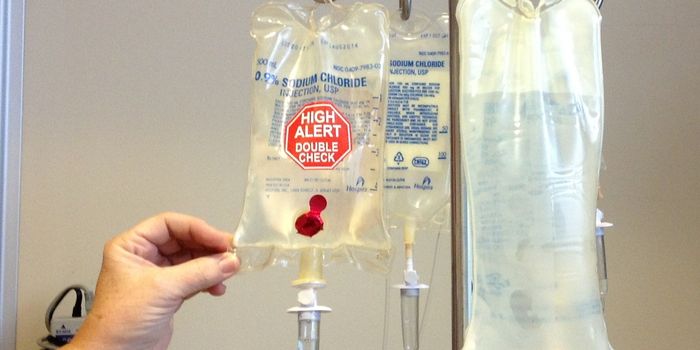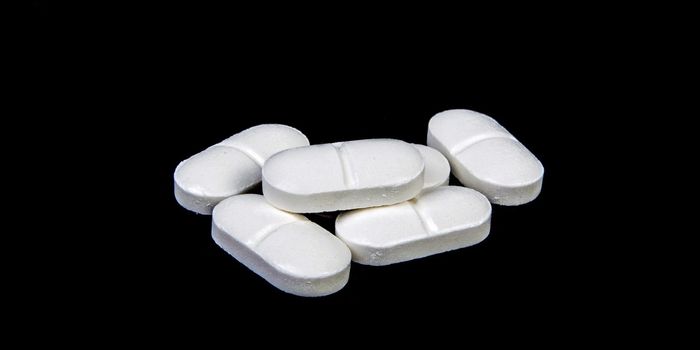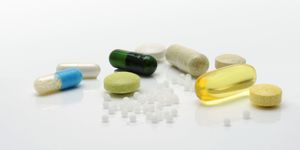A Visualization of Protein Translation Reveals Surprising Complexity
The genome contains all of the instructions a cell needs to build an organism. In coding regions of the genome, genes are transcribed into a molecule called mRNA, which is processed and then translated into proteins, which help build, maintain, and carry out the functions of tissues in the body (a video explaining the process is featured at the bottom of the article). Scientists have long thought that we have a solid understanding of how this process happens, but now researchers led by Marvin Tanenbaum at the Hubrecht Institute have found that there it's far more complex than once assumed. Reporting in Cell, the investigators used cutting edge microscopy techniques and molecular methods to watch translation happening inside of a live cell.
The DNA each cell carries is the same, and different genes will be turned on or off in different parts of the body to serve various purposes. Some genes can fill multiple roles, and sometimes have different functions in different tissues. It was thought that gene sequences are read in more or less the same way every time a protein is made by a cellular organelle called a ribosome - the cell's protein factory. If errors are introduced into the gene, the RNA, or the protein, the protein may not be able to do its duty or may do it improperly, which can both lead to disease.
After a sequence of DNA is transcribed into RNA, the ribosome translates the sequence into a peptide by reading three base pairs (a codon) at a time. Each set of three bases or codons represents an amino acid, which is linked to the one before it as the ribosome translates the RNA. In order to read those codons correctly and make the right amino acid sequence, the ribosome has to begin translating at precisely the right place, or a problem called a frameshift will occur. When a frameshift happens, a sentence that reads 'the car was not red' becomes 'hec arw asn otr ed' - and the amino acids that go with these 'alternate' codons will be made into a protein instead of the right one being produced.
"As illustrated by the example sentence, out-of-frame translation has a big effect on the protein and usually results in a protein that behaves differently and can damage the cell," explained Sanne Boersma, a Hubrecht Institute researcher.
There is a special codon that was thought to indicate where a protein should start to translate a protein - the codon AUG. But recent work by other groups has shown that mRNA translation is a lot more complicated than assumed. For example, ribosomes can read mRNAs in any of three frames, generating three unrelated peptides, and they can also keep translating beyond where they are supposed to stop.
Image: Translation of mRNAs by multiple ribosomes at once, both in-frame and out-of-frame. Upper part shows translation as observed through the microscope. The mRNA is visualized in red, the in-frame translation in blue (MoonTag), and the out-of-frame translation in green (SunTag). Right panel shows an overlay of MoonTag and SunTag. One mRNA (arrow) is translated both in-frame (blue) as well as out-of-frame (green). The bottom panel shows a schematic of an mRNA that is translated in-frame by multiple ribosomes and out-of-frame by one ribosome. / Credit: Sanne Boersma and Deepak Khuperkar © Hubrecht Institute
In this work, the researchers used fluorescent tags so they could see what was being made by a ribosome. Different proteins received different labels - either SunTag or MoonTag. By combining them, the scientists could visualize out-of-frame translations.
The researchers were surprised by how often out-of-frame translation happened. In some cases, nearly half of the proteins produced were made from a different genetic code than what had been expected. This could make interpreting genetic sequences far more challenging than we knew.
Sanne Boersma commented "Because of our study, we can now ask very important questions: what do all these new proteins do? Do they have important functions in our body, or are they waste side-products of translation that can damage our cells?"
Sources: AAAS/Eurekalert! via Hubrecht Institute, Cell










